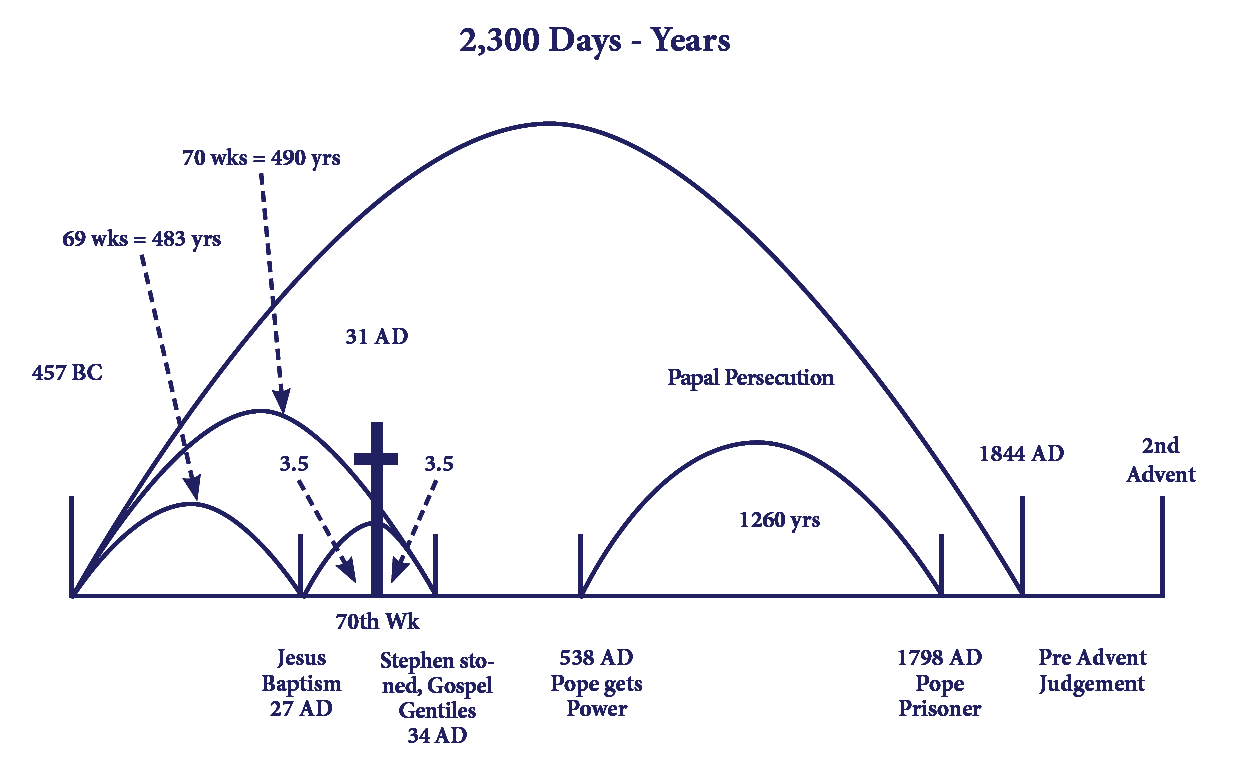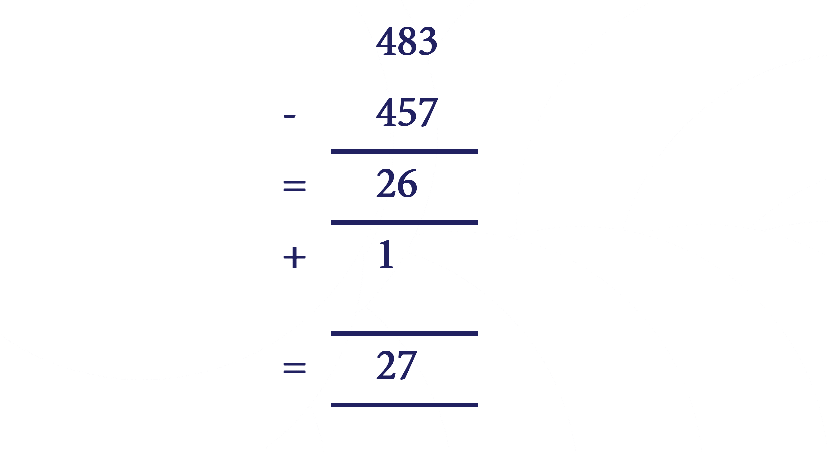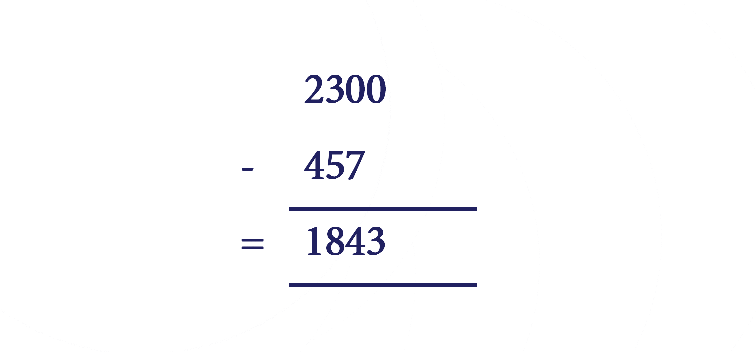

Of all the prophecies in the Bible, without doubt, the prophecy of the 2,300 days found in Daniel 8:14 is one of the most important. It firstly proves that Jesus is the Messiah and Saviour, and secondly, it points to His work of priestly ministry in heaven and helps identify His true church in the last days. It provides the justification for the existence of the Seventh-day Adventist Church as a distinct and separate denomination.
To clearly understand how this prophecy and its subdivisions found in Daniel 9:24-27 relate to history is would be helpful to be able to see an outlined diagram as shown below.
Also shown in this diagram is the 1,260 days (years) prophecy of Revelation 11:3, which deals with the period that Scripture says the papal power would rule supreme and persecute God’s people.
Throughout history, we have seen repeated attacks launched against this prophecy, and we have recognized these attacks as Satan’s attempts to discredit it to divert people’s attention away from it and away from our claim to be the movement that God raised on time to give the last warning message to the world, that is we find in Revelation 14:6-12. These attacks include denials that the book of Daniel was written by Daniel in the time of the Babylonian Empire and attacks on the chronological dating of the decree given in the seventh year of Artaxerxes, namely 457 BC, which is the beginning date for the prophecy. It also includes an attack on the date for the appearance of the Messiah at the end of the 69 weeks—when His baptism took place and confusion regarding the events and the precise date that marks the end of the prophecy.

In the previous chapter, I have dealt with the evidence for the beginning date of this prophecy, namely 457 BC. The decree of Artaxerxes is the only one that fulfills the specifications of the prophecy (See Ezra 7:8-26 & Dan. 9:25-27.) I have also dealt with the authorship and date for the book of Daniel in a previous chapter. In this chapter, I propose to present evidence for the date for the baptism of Jesus, AD 27, and the events that surrounded the end of the prophetic timeline, which is what happened in 1843 and 1844. To do this, we will have to look at the relationship between BC dates and AD dates and what happens when we cross that dividing line in history. We will also need to know how people in New Testament times counted the reigns of kings and rulers and what type of calendar they used.
In all of the New Testament, we have only been given one date linked to the reign or rule of a king. It is the date for the baptism of Jesus, and it is found in Luke 3:1-23. Here we are told that His baptism took place in the fifteenth year of Tiberius Caesar. From reliable Roman records, we know that Tiberius Caesar came to rule on the death of Augustus, and the date of his death was the nineteenth of August AD 14. Without any regard for the way ancient people reckoned the reigns of their kings, and without regard to the type of calendar they used, the Jehovah Witnesses and maybe others, just add the two figures together and get the following result:

This date will later be shown to be incorrect.
Looking at Daniel’s prophecy, some come up with another date, which will also later be incorrect.
Daniel 9:25 tells us that from the going forth of the commandment to restore and build Jerusalem, till the Messiah would be 69 weeks. That would be 483 days, and taking each day for a literal year (an accepted rule of practice known to Bible scholars, see (Num. 14:34, Ezek. 4:6), it would be 483 years. The word Messiah is the Hebrew word for the Greek word Christos or Christ in English, and both mean the Anointed One. Jesus was anointed with the Holy Spirit at His baptism (Acts 10:38). The 69 weeks, therefore, reach the baptism of Jesus.
Taking the beginning date for the prophecy as 457 BC, which I have shown to be the beginning date in a previous chapter, we would then have the following:

This date is also not correct, as we will see in the next section of this study.
We do our mathematical work in what we call base 10. We have ten numbers in sequence, and then we repeat being ten higher for the next ten numbers. For example, we go from 0 to 9, then from 10 to 19, etc. Mathematics may be done on any base. For example, some ancient civilizations used base 6, traces of which can still be seen in some of our usages. For example, 360 degrees in a circle is part of a base 6 system. Modern computers use base 2 so that a switch is either on or off. It would be very hard for us to do all our mathematical calculations in base 2, so when a computer has done its work, it has to convert the answer into base 10 to understand it. The feature of base 10 mathematics is that in any series of 10 numbers, there will always be a number that can be divided by the base with no remainder left over. In other words, there will always be a number with a zero in the series.
Now when historians and chronologists made the change over from BC dates to AD dates, they did not follow this rule. BC dates run backward while AD dates run forward, as will be seen below.

When they came to the changeover, they went straight from 1 BC to AD 1, as shown below.
Here we have ten numbers shown, but none of them has a zero.
Now the astronomers, who are famous for their mathematical skills, do follow the rule when they make the change over from BC to AD dates by inserting a year 0 or zero right after 1 BC and before AD 1. However, they do not refer to dates before Christ as BC dates but rather use minus numbers for them and positive numbers for AD dates, as shown below.

Now we will see that the dates used by astronomers for years before Christ are all in minus numbers and are one lower or less than the numbers used by historians and chronologists. For example, 1 BC becomes 0. The year 2 BC becomes -1, and 3 BC becomes -2, and so on.1
Now let us count five years from 3 BC and see what date we get on the AD side using the system of the historians and chronologists. A simple subtraction gives us an incorrect answer. 5-3 = 2. However, as seen below, the correct answer is 3. Therefore, when crossing the divide to get the correct answer on the AD side, you have to add one.

The way astronomers do their counting is that they do not need to add one, as shown below. For example, count 5 years from -2, and you arrive at 3.

As can be seen, whenever we calculate BC dates to AD dates to get the correct answer on the AD side, we need to add ONE
Now let us look again at the date for the baptism of Jesus. Remember that to get the correct answer, we need to add one because there is no year zero in the sequence. The 69 weeks of the prophecy give us 483 days or years of literal time. The beginning date is 457 BC, so we now subtract 457 from 483 and get 26 as the answer. But we now have to add one to get the correct answer since we have crossed the divide between BC dates and AD dates. See the figures below.

Thus we see that the correct date for the baptism of Jesus according to the prophecy is AD 27. We will now turn our attention to the evidence from the Bible and history to show that this date is correct.
According to Luke 3:1-23, Jesus was baptized in the fifteenth year of the reign of Tiberius Caesar. We had previously noted that he began his reign when Augustus died on the nineteenth. August AD 14. Now 14 plus 15 equals 29, so how do we harmonize history with the Bible evidence? To do this, we will need to know what kind of calendar was used in the time of Jesus and how people in those days counted the reigns of their rulers.
In the chapter which established the date 457 BC for the beginning of the 2,300 days prophecy of Daniel 8:14, we noted that the Jews were using a Fall to Fall (Autumn to Autumn) calendar for counting the reigns of their own kings and for foreign kings. However, during the time of the Maccabees, a historical period just before the time of Jesus’ birth, the Jews used a Spring to Spring calendar for their Maccabean kings. The Maccabean kings, who were descended from the priestly line, were undoubtedly influenced by the spring-to-spring religious calendar. However, they still used the fall-to-fall (autumn to autumn) calendar for foreign kings. History also tells us that in the Inter-testament period, or from around the time of Alexander the Great onwards, the use of accession year reckoning was abandoned in favor of the non-accession year system of counting the reigns of kings.2

We will now show how the baptism of Jesus took place in the autumn of AD 27, using the fall- to-fall calendar and the non-accession year method of reckoning the reign of kings and rulers.
Thus we see that a correct understanding of these principles shows that Bible prophecy and history agree perfectly.
Earlier in this chapter, I referred to the attacks of most non-Seventh-day Adventist scholars who attacked our teachings about 1844 by claiming that Daniel 8 and 9 are not connected. If their claims are true, then there is no connection between the 2,300 days of Daniel 8:14 and the 69 weeks and the 70 weeks of Daniel 9:24, 25. Therefore, they have no beginning date for the 2,300 days prophecy.
The only beginning date in the two chapters is the one in Daniel 9:25. That then means that the 2,300 days mean nothing to them; it is meaningless. That is why they remain silent about this time prophecy. They have no way of understanding it or making any application. Even some Seventh-day Adventists, influenced by such suggestions, fall into this trap and cannot explain this long timeline prophecy.
We will now present three lines of argument that clearly show that these two chapters are linked and constitute the third great prophecy that Daniel’s book presents.
1 Argument based on Parallelism
The following is a collection of parallel concepts seen when you compare these two chapters:
Both chapters revolve around the sanctuary, saying it would be trodden down, then cleaned or restored. See Daniel 8:14 and 9:26. Also, the sacrifices are mentioned. See Daniel 9:21, 27.
Both refer to Christ and the Antichrist as the protagonists in a war over the sanctuary. See Daniel 8:11 and 9:23.
Jesus quoted from both Daniel 8 and Daniel 9. Trials and tribulations are mentioned in Daniel 8:13, Luke 21:24, Daniel 8:7, and Matthew 24:15.
Both chapters are dated to the late Babylonian period of history and the early Medo-Persian period, which followed Babylon.
Both deal with judgments on the Antichrist Power. Read Daniel 8:25 and Daniel 9:27, which say that the power that desolates will be desolated. See Margin reading in the Kings James Bible.
Both chapters bring in everlasting righteousness. See Daniel 8:14, 25 and Daniel 9:24.
2. Argument based on the Hebrew words Charzon and Mareh
The vision of Daniel 8 of the ram and the he-goat together with the sanctuary, and the time period of 2,300 prophetic days symbolizing 2,300 years of literal time, must have caused Daniel extreme concern. He did not understand what the interpretations were. The prophecy needed to be explained to him. He records in Daniel 8:16 that the angel Gabriel was commissioned to explain it all to him. Gabriel explained in the following verses that the ram represented Medo–Persia and the goat represented Greece. The single horn on the goat was the first great king, namely Alexander, and that when it was broken, four horns would take its place. When Alexander died, his empire for some time was divided into four divisions. Later another horn or power would arise out of one of the four winds (four points of the compass). This horn represents pagan and papal Rome that would attack the sanctuary. Here we see the parallel with Daniel 7, which speaks of the terrible beast and the little horn power that would attack God’s people and think to change God’s law. However, this power would be “broken without hand” (that is by God) Daniel 8:25.
Up to this point, Gabriel had said nothing about the time period of 2,300 days, and it was the only part of the prophecy not yet explained. However, it appears that he began to explain it by saying that “it shall be for many days.” See Daniel 8:26. At this point, Daniel was so overcome that he fainted. No further explanation was then possible. Gabriel could not explain anything more to him while he was unconscious. The chapter ends with Daniel saying that nobody understood it. In context, he was referring to the time period of 2,300 days.
That Daniel was perplexed over this time period appears to be the basis of the prayer he prayed in the early verses of Daniel 9. He says that he had been studying the prophecies of Jeremiah (Jer. 29:10), where he prophesied that the captivity in Babylon would last for 70 years. Daniel must have thought that God had changed His mind about the seventy years and that they would remain in captivity for the next 2,300 years. The burden of his prayer after confession of sins was an appeal to God to allow His people to return to the Promised Land and rebuild the city and the “sanctuary.” In Daniel 9:19, he pleaded with God to “defer not.”
While praying this prayer, Daniel recorded that Gabriel, whom he had seen “in the vision at the beginning,” appeared again to him and invited him to “consider the vision.” See Daniel 9:21, 23.
Immediately Gabriel began to talk about the time periods, namely the 70 weeks and the 69 weeks. The 70 weeks or 490 days or literal years referred to the time God was allotting to the Jews as His people, and the 69 weeks or 483 days or literal years would reach the coming of the Messiah or the Anointed One who was Jesus.
Now the English translations do not reveal in detail what is clearly shown in the Hebrew text. The word “vision” that appears twice in Daniel 9:21 23 in the Hebrew text actually comes from two different words. Daniel had seen Gabriel in the vision of Daniel 9 21. There the original word for “vision” is charzon. This word means the whole vision and, in context, must refer to the vision seen in Daniel 8. However, in Daniel 9:23, he is told to consider the vision, and here a different word is used, namely mareh, which is a word used for a small vision or a part of a vision. In context, it refers to that part of the vision that Gabriel had not explained in chapter 8. That part, of course, in the time period of 2,300 days or years.
Knowledge of the meaning of these two Hebrew words strongly supports the belief that these two chapters in Daniel are linked together. Attempts to argue that these two chapters are not linked together cannot be accepted .3
3. Argument based on the Hebrew word Chathak
When Gabriel began to explain to Daniel the sub-divisions of the 2,300 days, he first of all stated in Daniel 9:24 that “Seventy weeks are determined upon thy people.” Almost all English translations use the word “determined.” A few use “allocated” or “decreed” or some other words that mean the same. Undoubtedly, scholars have seen in this wording that a period of 490 years here is intended as a time for the Hebrew people to enjoy the special status of being God’s chosen people.
However, the word chathak does have other meanings. In fact, it may come as a surprise to many that “determined” is not the primary meaning of this word. The primary meaning of the word is “to cut off.” Secondary meanings include “to decree, to determine.”4
Some have been so bold as to declare that “No Hebrew Scholar will tell you that Cathak means ‘cut off.’” They are, of course, trying to build an argument that Daniel 8 and 9 are not connected in any way. Seeking evidence as to the truth or not of these claims, my brother, Pastor Athal H. Tolhurst, while serving in administration in the South Pacific Division of the Seventh-day Adventist Church, was once attending committee meetings at the General Conference of the SDA Church in the USA. While at Andrews University, he visited the library and asked a librarian where he could find their collections of Hebrew Lexicons. He was shown a shelf containing 17 of them. He examined all 17 and found 14 of them gave the primary meaning as being “cut off,” while only three gave “decreed” or “determined” as the main meaning .5
The word chathark is the word or is related to the Hebrew word for “circumcision.” The seventy weeks cannot be cut off from anything else but time. We, therefore, stand on a sound linguistic and exegetic platform when we interpret Daniel 9:24 as being linked to Daniel 8:14. To accept any other rendering would be a violation of the evidence .6
When William Miller concluded from his study of the 2,300 day (years) prophecy that Jesus would then come, he was not aware of the problem of the year 0, and so in doing his calculation, he just subtracted 457 BC from the 2,300 years and arrived at 1843.

When Jesus did not come by the end of 1843, his disappointed followers asked him why Jesus had not come. Miller replied that Roman 1843 had passed but that Jewish 1843 would not end until the spring in 1844 or around the end of March. Thus expectations were still kept alive. But when Jesus still did not come by the end of March, there was another real disappointment. At this time, many who had joined the movement, just in case he was right, but who were not really converted, left the movement. Ellen G. White said that God allowed Miller to make this mistake so that the movement would be purified with the departure of those who were not really converted.7
From the end of March onwards, much study was undertaken to try and find the reason for the failure of their expectations. The beginning date was re-examined and found to be correct, but it was not until mid-summer (northern hemisphere) that they realized that the 2,300 days actually reached the autumn of 1844. Further study of the Old Testament sanctuary services, especially of the Day of Atonement (Leviticus 16) when the earthly sanctuary was cleansed, led to the establishment of the date of October 22, 1844, as the date for the Day of Atonement (Yom Kippur) in 1844. They equated the cleansing of the earthly sanctuary, which was for the Jews a Day of Judgment, as the day when Jesus would cleanse the earth in a Day of Judgment at His second coming. The October 22 date was arrived at by using the method of calculating the Jewish Day Of Atonement followed by the Karaite Jews, who had preserved the biblical method of arriving at the tenth day of the Jewish seventh month (Tishri), which was the Day of Atonement. Leaders in this new understanding were Samuel S. Snow and Joshua V. Hines.8
This realization led to what has been called the Midnight Cry. Therefore, the Millerite movement did not collapse after the disappointment of the spring of 1844 but rapidly grew to a bigger movement than it had been before. It has been claimed that in the remaining three to four months of the year, the news about the expectation of the return of Jesus on October 22 reached many places around the world.9
When Jesus did not come as expected on that day, the believers were terribly disappointed. That is why it has been called the Great Disappointment. However, on the next day, October 23, Hiram Edson and another man were walking across a field on their way to encourage others who were also disappointed. When about halfway across the field, he stopped and came to see clearly that the cleansing of the sanctuary foretold in Daniel 8:14 was not the cleansing of the earth, at the Second Coming of Jesus, but rather it involved the work of Jesus in the heavenly sanctuary services, before His return. This insight led to the intense study of the Old Testament’s sanctuary services and the book of Hebrews in the New Testament.
From this study, this small group of Adventists realized that Jesus had begun a work of judgment that must take place before He could cleanse the heavenly sanctuary and return to gather His people. Seventh-day Adventists have in the past referred to this work of judgment as to the “investigative judgment.” Another name for it that is now gaining more common use is the “pre-Advent judgment.” The small group of early Adventists who came to this understanding has grown to be the worldwide Seventh-day Adventist Church.
In chapter 13, I deal with the subject, “The Deeper Meaning of Daniel 8:14.”
__________
SUPPORTING SOURCES
H. W. F. Gesenius. Gesenius’ Hebrew and Chaldee Lexicon to the Old Testament. Ada, MI: Baker Pub Group, 1979.
Nichol, F. G., ed. Seventh-day Adventist Bible Commentary, vol. 4. Washington DC: Review and Herald Publishing Association, 1955.
Nichol, F. D. The Midnight Cry. Washington DC: Review and Herald Publishing Association, 1944.
Parker, Richard A and Dubberstein, Waldo H. Babylon Chronology 626 BC-AD 75. Providence Rhode Island: Brown University Press, 1969.
Tolhurst, A. H. Australian Record. Article: Cut Off or Determined. October 22 1983.
White, E. G. Early Writings. Washington DC: Review and Herald Publishing Association, 1882.
White, E. G. The Great Controversy. Mountain View, CA: Pacific Press Publishing Association, 1888.
Young, R. Analytical Concordance to the Holy Bible. London and Redhill: England Lutterworth Press, 1943.
__________
1 Francis G. Nichol, ed. Seventh-day Adventist Bible Commentary, vol. 5, Washington DC: Review and Herald Publishing Association, 1956, p. 240.
2 Ibid., p. 245.
3 Robert Young, Analytical Concordance of the Holy Bible, 4th ed. London and Red Hill: England Lutterworth Press, 1943. See entries “Vision, Chazon and Mareh.”
4 See H. W. F. Gesenius, Gesenius’ Hebrew and Chaldee Lexicon to the Old Testament, Ada, MI: Baker Pub Group, 1979.
5 Athal H. Tolhurst, Australasian Record, “Cut off or Determined,” October 22, 1983, p. 6.
6 Francis G. Nichol, ed. Seventh-day Adventist Bible Commentary, vol. 4, Washington DC: Review and Herald Publishing Association, 1955, p. 851.
7 Ellen G. White, Early Writings, Washington DC: Review and Herald Publishing Association, 1882, pp. 235-236.
8 Francis D. Nichol, The Midnight Cry, Washington DC: Review and Herald Publishing Association, 1944, pp. 219, 230.
9 Ellen G. White, The Great Controversy, Mountain View, CA: Pacific Press Publishing Association, 1888, pp. 298-405.